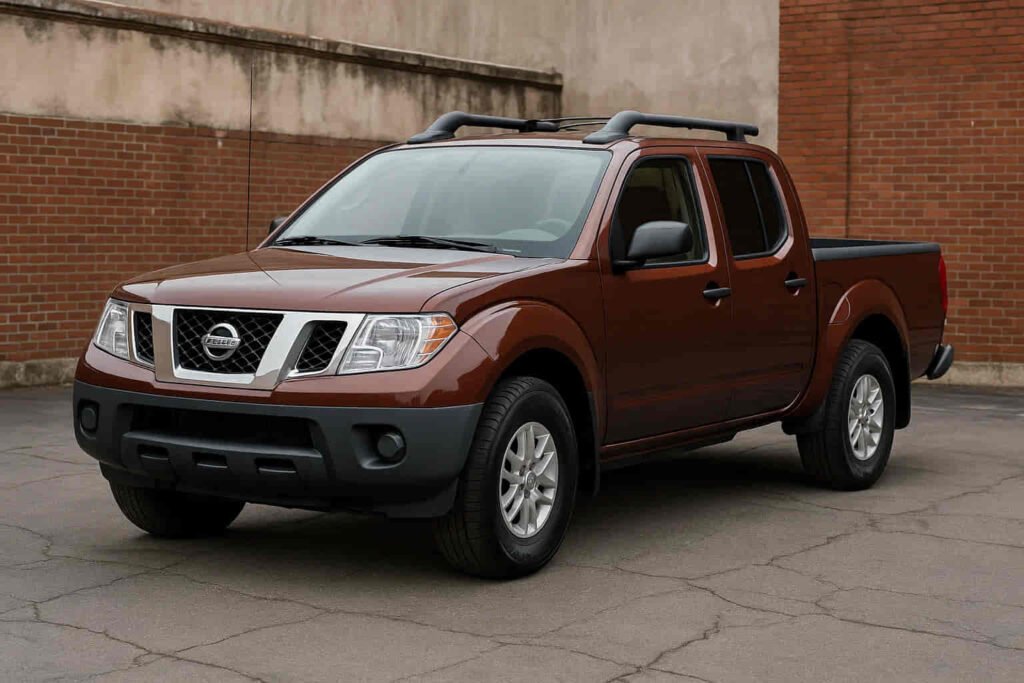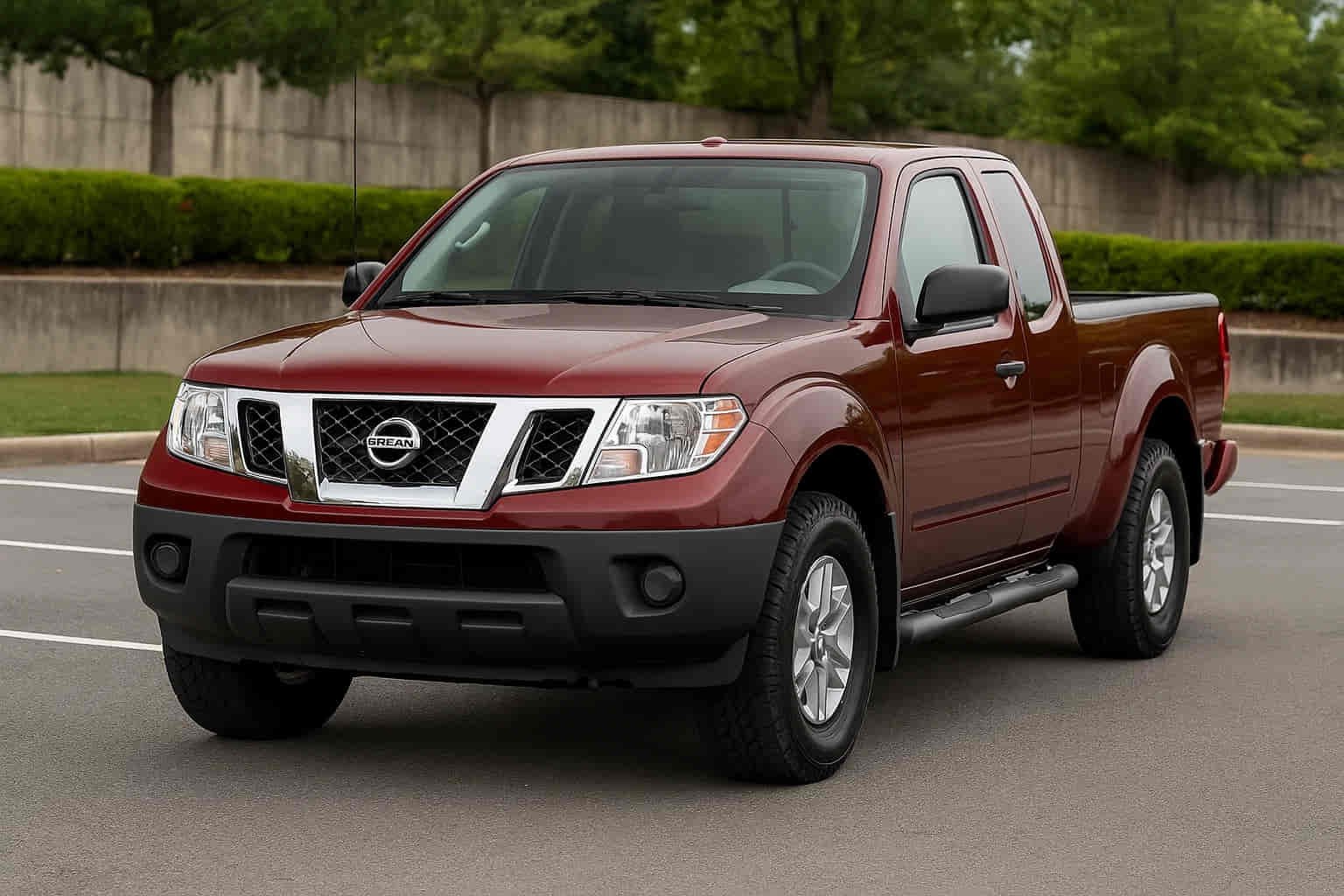Buying a used truck should feel like a smart investment, not a gamble with hidden repair bills. Yet for some Nissan Frontier owners, that gamble turned into a costly lesson. While the Frontier has earned its reputation as one of the most durable midsize pickups in the U.S. market, not every model year lives up to that rugged image. Between 2000 and 2025, reliability scores, recall data, and real-world owner experiences tell two very different stories—one of longevity and another of mechanical frustration.
In this complete reliability breakdown, we’ll explore the Nissan Frontier years to avoid, uncovering which generations suffered from chronic transmission failures, coolant contamination, and electrical malfunctions. Backed by insights from CarComplaints, NHTSA, and long-term owner reports, this guide helps you distinguish the dependable workhorses from the years that could drain your wallet. Whether you’re shopping for a reliable daily driver or your next off-road companion, understanding the Frontier’s reliability timeline could save you thousands—and a lot of frustration down the road.
Nissan Frontier Overview: Reliability Through the Years
Since its debut in the late 1990s, the Nissan Frontier has stood as a symbol of midsize toughness—a truck built for work, adventure, and everyday resilience. Across its three generations, however, reliability has shifted with each redesign, engine upgrade, and transmission overhaul. The first generation (1998–2004) captured attention for its compact utility and basic yet durable design, but also revealed early signs of mechanical inconsistency in aging models.
The second generation (2005–2021) marked a turning point, introducing stronger powertrains and better towing performance. Unfortunately, it also birthed one of the most notorious reliability issues in the truck’s history: the transmission and radiator cross-contamination defect that plagued mid-2000s models. While later years improved build quality and ride comfort, owner data shows fluctuating dependability tied to specific production years.
With the arrival of the third generation in 2022, Nissan finally modernized the Frontier with a new V6 engine, updated technology, and enhanced safety systems. Early reports indicate a significant leap in reliability, yet a few software and electronic glitches remind buyers that no model is flawless. Understanding this evolution—how the Frontier’s strengths and weaknesses developed over time—is key to identifying which years to trust and which to avoid.
Nissan Frontier Years To Avoid (2000–2010): The Early Trouble Makers
The early 2000s marked both growth and growing pains for the Nissan Frontier. While the truck earned praise for its off-road capability and solid frame construction, certain production years between 2000 and 2010 became cautionary tales for used buyers. The most infamous culprit among them was the 2005–2007 Frontier, a period defined by a serious engineering flaw that allowed coolant from the radiator to leak into the transmission fluid. This contamination often led to catastrophic transmission failure—sometimes before the odometer even reached 100,000 miles. Owners reported repair bills exceeding $3,000, with many vehicles requiring full transmission replacements.
The problem wasn’t limited to drivetrains. Frontier models from 2008 to 2010 began showing electrical and fuel system inconsistencies, from faulty fuel level sensors to unpredictable engine stalling. While these issues were less severe than the transmission fiasco, they still eroded consumer trust and inflated maintenance costs. The 2000–2004 Frontier models, though simpler in design, also suffered from corrosion and minor drivetrain wear that revealed the limits of early Nissan engineering under heavy-duty use.
For anyone considering a used Frontier from this era, recognizing these problem years is essential. These models are among the most significant entries in the list of Nissan Frontier years to avoid, not because they lack power or comfort, but because their reliability risks can outweigh the initial savings on the used market.
Nissan Frontier Mid-Generation Problems (2011–2021)
By the early 2010s, Nissan had addressed many of the transmission nightmares that haunted the mid-2000s Frontier, yet reliability remained uneven across the decade. The 2011–2021 period is often described as “quietly inconsistent” — a phase where the Frontier matured mechanically but still struggled with sporadic component failures that frustrated long-term owners. The 2012 Frontier, for example, developed a reputation for engine stalling linked to fuel delivery issues, while the 2016 model faced a wave of complaints about premature air conditioning compressor breakdowns. These problems, though not as severe as the earlier transmission crisis, highlighted Nissan’s difficulty in achieving consistent quality control across production years.
As the Frontier aged within the D40 generation, additional wear-related challenges surfaced. Suspension components tended to degrade faster in models used for towing or off-road driving, and electrical systems—particularly sensors and switches—showed vulnerability to long-term exposure and corrosion. The 2019 Frontier marked a turning point: despite minor suspension complaints, it delivered solid reliability overall, reminding buyers that not all late-generation models should be dismissed.
For shoppers evaluating Nissan Frontier years to avoid, the lesson from this era is about nuance. Not every model year was bad, but those plagued by recurring minor issues could quietly drive up ownership costs. Understanding this subtle middle phase helps buyers separate Frontier’s genuinely dependable years from those that only appear trouble-free on paper.
The Modern Frontier (2022–2025): Has Nissan Finally Fixed It?
When Nissan unveiled the fully redesigned Frontier for the 2022 model year, it wasn’t just another refresh—it was a long-awaited reset. After more than fifteen years on the same platform, the third-generation Frontier arrived with a stronger 3.8-liter V6 engine, a smoother nine-speed automatic transmission, and a cabin finally worthy of modern pickup expectations. Reliability reports during the first two production years signaled encouraging progress, as early owner feedback praised the drivetrain’s refinement and the build quality that felt more solid than its predecessors.
Still, perfection remains elusive. While the new powertrain and chassis design have proven robust, several 2022 and 2023 owners noted minor software malfunctions, infotainment freezes, and sporadic safety system warnings. These issues are mostly electronic rather than mechanical, suggesting that Nissan has largely solved the critical hardware problems that defined earlier Nissan Frontier years to avoid. By 2024, updates to onboard software and improved supplier consistency helped stabilize the model’s reliability ratings, positioning the latest Frontier as one of the more dependable choices in its segment.
The modern Frontier demonstrates that Nissan has listened, learned, and evolved. For used buyers, it means the most recent models finally deliver the dependability and driving confidence the brand has long promised—without the mechanical baggage of past generations.
Best Nissan Frontier Years To Buy

While discussions around the Nissan Frontier years to avoid often dominate reliability forums, there’s another side to the story—model years that quietly proved to be some of the most dependable midsize trucks on the road. Among them, a few stand out as smart buys for used shoppers who value long-term durability without paying a premium for brand-new models.
The 2004 Frontier, for instance, represents the best of the first generation—simple mechanics, fewer electronic components, and a track record of solid drivetrain longevity. In the D40 generation, models like 2013 and 2015 earned praise for refined engines and minimal transmission issues, offering a more balanced ownership experience. As for the latest redesign, the 2023 Frontier is quickly becoming a reliability benchmark, showing how far Nissan’s engineering has progressed since its troubled mid-2000s era.
What connects these years is consistency: predictable performance, manageable maintenance costs, and positive owner feedback across multiple review platforms. Buyers who research these standout models often discover they deliver the same rugged capability Frontier fans love, minus the mechanical risks of the earlier years to avoid. For anyone eyeing a used Frontier, focusing on these proven production years can make the difference between a dependable daily companion and a costly repair project.
Common Nissan Frontier Problems & How to Prevent Them
Beyond identifying the Nissan Frontier years to avoid, understanding the truck’s most common mechanical issues is essential for long-term reliability. Across generations, a few recurring patterns emerge that reveal both engineering weaknesses and owner maintenance habits. The most infamous problem—the radiator and transmission cross-contamination—defined the mid-2000s models, but even in later years, drivetrain wear and overheating risks persisted in trucks used for heavy towing. Ensuring regular coolant inspections and replacing the radiator before failure can save owners from catastrophic repair costs that plagued earlier models.
Electrical and sensor-related malfunctions also surface across multiple Frontier generations. Owners frequently reported issues with fuel level sensors, throttle position sensors, and airbag warning lights. These often result from gradual corrosion or wiring degradation rather than design flaws. Preventing them starts with periodic inspection of harness connections, proper grounding, and timely replacement of aging components.
Finally, suspension fatigue and premature brake wear remain consistent complaints, especially among drivers who push their trucks off-road. Addressing these issues proactively—through high-quality aftermarket parts and scheduled undercarriage maintenance—extends vehicle life significantly. Nissan’s later updates, particularly post-2022, have mitigated many of these chronic faults, but the Frontier’s long-term dependability still depends more on diligent care than luck. Knowing these weak points and how to manage them turns a potentially high-maintenance pickup into a reliable partner for years to come.
Conclusion
The story of the Nissan Frontier is one of evolution—proof that even a rugged, dependable truck can stumble through years of costly lessons before regaining its stride. From the transmission failures that defined the mid-2000s to the refined engineering of today’s models, each generation tells a chapter in the brand’s pursuit of lasting reliability. Understanding the Nissan Frontier years to avoid isn’t about criticizing the truck’s legacy; it’s about learning from history to make smarter choices in the present.
Buyers who study reliability data, recall reports, and owner feedback are far less likely to be surprised by hidden issues. The difference between a regrettable purchase and a reliable long-term companion often comes down to awareness—and the willingness to look beyond the price tag. With the most recent Frontiers showing renewed strength and fewer mechanical setbacks, the model’s reputation is finally aligning with its promise. For anyone entering the used market, knowledge is your best defense: know which years to avoid, which to trust, and drive with confidence that your Frontier will live up to its name.

